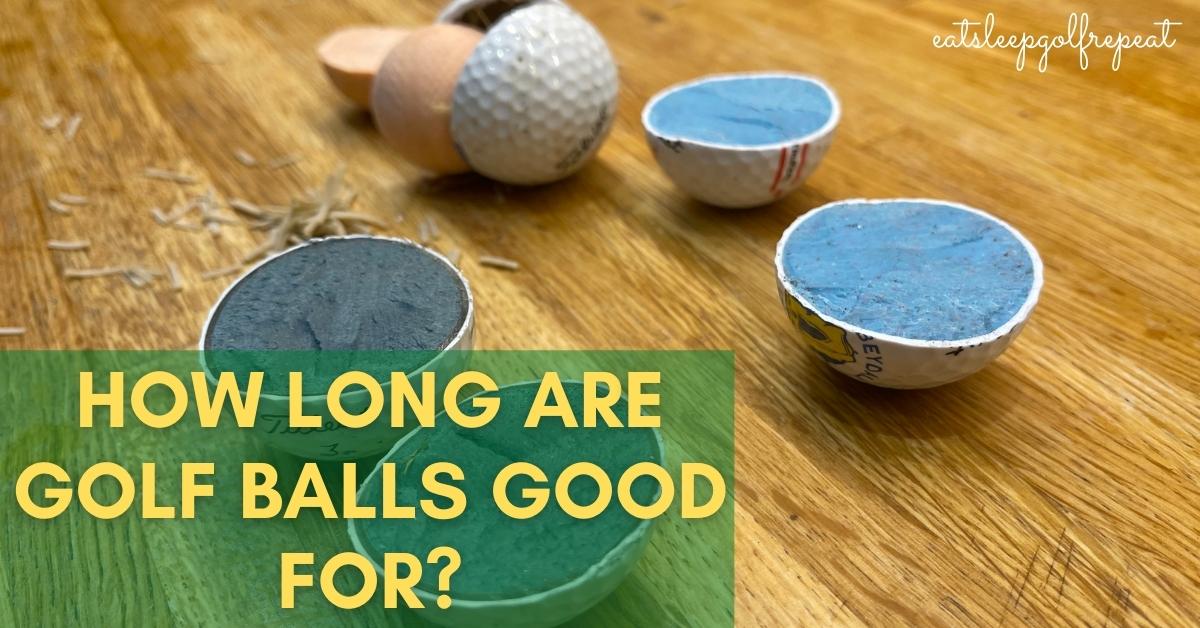
How Long Are Golf Balls Good For?
For new golfers, it is essential to understand that your game will only ever be as good as your equipment.
Even the best golfers in the world can’t perform as well if their gear is not up to scratch.
We aren’t suggesting that you throw everything you own away and splash out on the most expensive balls you can find; of course, there’s nothing wrong with this.
But what we would suggest is keeping an eye on how long you use each ball and whether it sustains any damage.
But how long are golf balls good for?
A good quality golf ball should be able to go through around seven 18-hole games before it starts to show signs of wear and tear.
It is much more likely that you would lose your golf ball before it stopped performing.
That said, you ought to check your ball before a game and if it begins to feel a little rough then it is time to replace it.
What Makes Golf Balls So Resilient?
You only have to hold a golf ball in your hands to see and feel that it is a durable little piece of equipment.
While the golf ball has undergone some pretty impressive changes over the years, the modern ball is one of the most resilient balls in the sporting world.
You see, while they may be small, golf balls need to be able to stand up to some incredibly high swing speeds.
What’s more, the terrain on the golf course could serve as a way of prematurely damaging a ball, were it not resilient.
That said, not every golf ball is going to be as durable as the next and in truth, you get what you pay for.
There are golf balls out there that are quite expensive.
Take the Titleist Pro V1 which currently retails at around $50 per box. Of course, there are balls on the other extreme end of the scale which can be picked up somewhere in the single figures; but are you getting the same quality? Probably not.
- Longer Distance With Consistent Flight
- Very Low Long Game Spin And Penetrating Trajectory
- Increased Drop-And-Stop Short Game Control
- Softer Feel
There are other things to think about when it comes to choosing a golf ball for resilience and durability.
Most of this comes down to what the ball is made of.
For example, you’ll first need to think about the cover.
As you’ll see in our ‘how golf balls are made’ article, these balls are made from several layers.
The cover, or top layer is typically made from either urethane or an ionomer material which is a little tougher.
The tougher ionomer material is generally used for two piece golf balls as it gives them a little more structure.
It’s hard nature means that it works especially well for golf balls that are used for distance.
Moreover, it will far more easily resist fast swings.
However, urethane would usually be seen on a three or four piece golf ball.
There are also five piece balls and this same material would generally be used here too.
The problem with urethane is that, owing to its softer nature, it is more prone to scuffing.
As well as having a durable cover, golf balls have inner layers that are made from polymers.
These are amazingly resistant and will withstand a lot before they break.
Have you ever tried to break a golf ball? We’d bet that even the most determined would struggle!
The golf ball core is designed in such a way that it can withstand repeated swings and speeds.
You will find that a well made golf ball will last as many as seven rounds, maintaining both its shape and performance.
When Should I Change My Golf Ball?
While golf balls are very durable, it is important to check them over between games and make sure that there are no visible signs of damage.
If you do notice anything then it might be best to discard the ball and start with a fresh one.
For some people, the idea of using the same ball for more than one round is abhorrent and there are golfers out there that will use a new ball every time.
If you’re going to do this, we would suggest recycling your balls – more information on that later on!
How To Store Golf Balls
If you’ve been playing golf for some time, you will probably have heard a lot of myths about the game.
One of the most common, when it comes to storing golf balls, is that keeping the balls in the freezer is the best option.
The idea behind this is that the colder temperatures would ensure the balls retain their compression.
However, this method of storage could have an adverse effect.
Think about playing golf in cold weather; what happens? Your balls don’t fly as far and this is because of the extreme in temperature.
Keeping your golf balls in the freezer could actually cause them to lose performance so it’s best to avoid putting them in here.
The best way to store your golf balls is to simply keep them at room temperature in a dry environment.
There are a lot of people that believe storing golf balls long term is not good for them, but again, there isn’t any truth in this.
Buying a large batch of your favourite golf balls and keeping them in a cool, dry place isn’t a bad idea.
What To Do With Old Golf Balls
In theory, you could simply throw your old golf balls out.
If you’ve won a big tournament with a particular ball, you might want to keep it as a souvenir.
But for the most part, you’ll want to get rid to avoid having a mountain of used balls.
In today’s society, there is an incredible importance on recycling and the good news is that you can recycle your old golf balls.
There are companies out there that offer this service, so pop in a Google search for your local area and do your bit for the environment.
Moreover, it is possible to purchase refurbished or eco-friendly golf balls, if you want to do that little bit extra.
Conclusion
As far as balls are concerned, the humble golf ball is, without doubt, one of the most resilient and durable in sport.
While some people like to swap their balls after every round, you could get as many as seven rounds out of a single ball.
Of course, this is based on the condition that the ball has sustained no damage as this could affect its performance.


